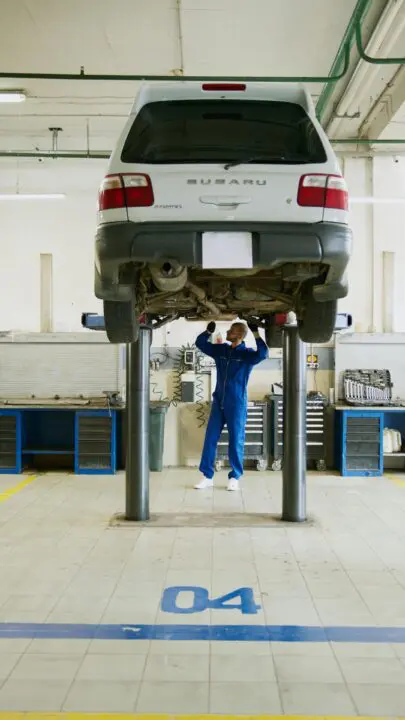Professional Service Firms Should Have Health and Safety Plans
Many professional service firms seem to think that health and safety rules are requirements for contractors and others performing construction work.
Text
Many professional service firms seem to think that health and safety rules are requirements for contractors and others performing construction work. Firms often are surprised or confused when a potential client requires that they submit their health and safety plans as a contractual requirement.
All employers are responsible for the health and safety of their employees while performing job functions. The purposes of a firm’s health and safety policy should be to reaffirm a commitment to providing safe and healthful working conditions for employees, and to comply with applicable federal, state, and local health and safety laws and regulations. Under federal occupational health and safety law, an employer must follow the regulations of the government and provide for the health and safety of its employees. Although the Occupational Safety and Health Administration (OSHA) does not require professional service firms to have a written safety plan, it is prudent for all firms to acknowledge that employees are provided safe and healthful working conditions. In some states, regulations may require written plans or impose employer responsibility for precautions in excess of federal standards.
A health and safety plan serves to minimize potential liability under legal and regulatory criteria that may vary or change.
A health and safety plan also provides guidance on meeting health and safety obligations, and serves to minimize potential liability under legal and regulatory criteria that may vary or change. It is especially important for professional service firms to have a safety plan for activities on project field sites where the firm provides professional services.
Health & safety plans: Essential for visiting construction sites
Employees of a professional service firm may be exposed to hazards on a site even though the firm does not control the site. Construction site health and safety plans contain elements of OSHA’s safety requirements. Professionals who are on a construction site must obey the rules and follow the health and safety plans of the party in control of the site—usually the client or the contractor—as they apply to the professional’s services at that location. A professional service firm, therefore, should require adequate briefing and training on the owner’s or contractor’s safety plans for the firm’s employees who will be performing on-site services.
When a firm sends employees to a field site to evaluate the construction work on behalf of the project owner, those employees must clearly understand their duties and lines of authority with respect to protecting themselves and the health and safety of others. Health plans typically specify measures that prevent the exposure of employees to chemical or pathogenic agents, such as the use of respirators, protective outfits, or air monitoring. Safety plans address the primary hazards of direct transfer of kinetic, thermal, or electrical energy. Therefore, safety plans typically specify measures that prevent exposures to these perils such as using hard hats, eye protection, and appropriate footwear.
OSHA requires the use of personal protective equipment to reduce employee exposure to hazards.
Every professional involved on construction sites should know that OSHA requires the use of personal protective equipment to reduce employee exposure to hazards. These requirements apply to professionals visiting the site as well as construction workers. Although a site-specific safety plan may have to be developed for each job site, knowledge of some basic protections is necessary. Additional personal protective equipment may be required depending on the site and the professional’s task, such as if there is the potential for exposure to hazardous conditions. Even though professional employees are expected to use reasonable judgment regarding whether additional personal protective equipment, beyond that required, will be necessary for certain tasks, they should have basic training and knowledge of the specific site before entering.
Requiring hard hats to be worn at all times on job sites is obvious. Eye protection should be required when there are potential hazards from flying objects or particles, chemicals, arcing, glare, or dust on-site. Protective footwear may be needed to prevent injuries from falling objects, chemicals, or sharp objects in the path of travel. Protective gloves or clothing may be required to protect against certain hazards. Hearing protection near loud equipment might be necessary. In addition, regulations or the contractor’s precautions might require the use of harnesses and lanyards for fall protection as required in OSHA Construction Safety Standards.
Firms need to educate staff about dangers
Professionals visiting a construction site should be aware of what emergency procedures have been established for the job site. While performing on-site services, professionals should not remove, displace, damage, or destroy any safety device or safeguard provided for use on the job. Entering an area which has been barricaded not only might violate safety requirements and endanger the employee, but also might put others at risk.
The actions of a professional service firm’s on-site employees can expose employees of the owner, the contractor, or other project employers to a hazard if the professional fails to comply with recognized standards applicable to the project. Professional service employees must have a basic understanding of OSHA requirements, knowledge of the site controller’s safety program, and an understanding of how on-site hazards could endanger their lives. Although personal safety while visiting a construction site would seem to involve common sense, there has to be an awareness of site-specific safety rules and a conformance to the precautions and programs established for the site.
Victor and CNA work with the AIA Trust to offer AIA members quality risk management coverage through the AIA Trust Professional Liability, Business Owners, and Cyber Liability Insurance Programs to address the challenges that architects face today and in the future.



